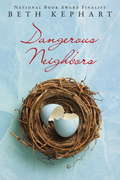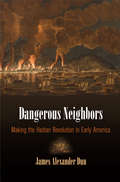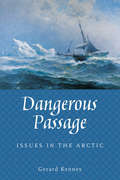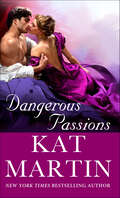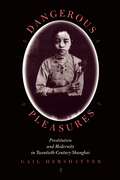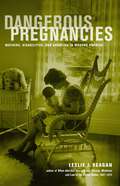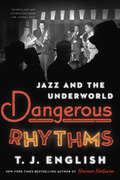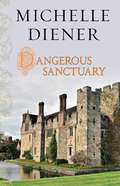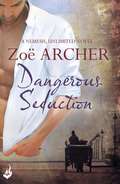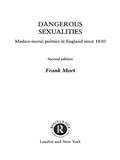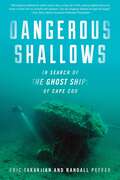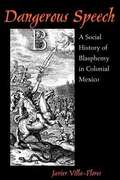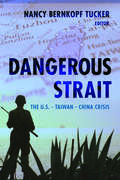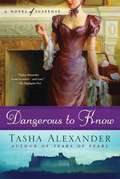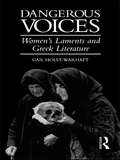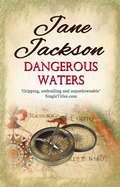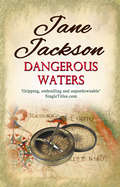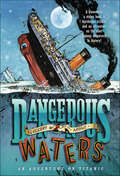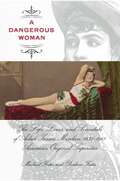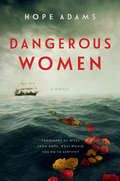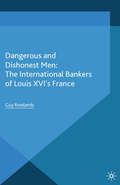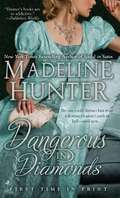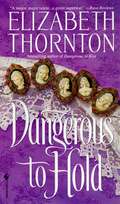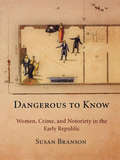- Table View
- List View
Dangerous Neighbors
by Beth KephartIt is 1876, the year of the Centennial in Philadelphia. Katherine has lost her twin sister Anna in a tragic skating accident. One wickedly hot September day, Katherine sets out for the exhibition grounds to cut short the haunted life she no longer wants to live. Filled with vivid detail that artfully brings the past to life, National Book Award nominee Beth Kepart's DANGEROUS NEIGHBORS is a timeless and finely crafted novel about betrayal and guilt, hope and despair, love, loss, and new beginnings. Publisher's Weekly Starred Review Set in Philadelphia against the back-drop of the 1876 Centennial Exhibition (the first World's Fair in the U. S. ), this atmospheric novel traces the sentiments of grief-stricken Katherine, whose identical twin sister, Anna, died in a tragic accident earlier in the year. As the novel opens, Katherine, who feels responsible for Anna's death, has decided to take her own life. Again and again, she is drawn to the exhibition grounds. Here, futuristic marvels and unexpected events-including a disastrous fire- detain her from completing her suicidal mission. Losing herself in a throng of strangers, she examines her past, recalling the development of her sister's secret romance with a "dangerous neighbor" and the final sequence of events that led to Anna's death. Conjuring sharp, meticulously detailed images of fair exhibitions ("The wonders of the world slide past. Parisian corsets cavorting on their pedestals. Vases on lacquered shelves. Folding beds. Walls of cutlery. The sweetest assortment of sugar-colored pills, all set to sail on a yacht"), Kephart (The Heart is Not a Size) evokes a tantalizing portrait of love, remorse, and redemption. Ages 12-up. (Aug. )
Dangerous Neighbors: Making the Haitian Revolution in Early America (Early American Studies)
by James Alexander DunDangerous Neighbors shows how the Haitian Revolution permeated early American print culture and had a profound impact on the young nation's domestic politics. Focusing on Philadelphia as both a representative and an influential vantage point, it follows contemporary American reactions to the events through which the French colony of Saint Domingue was destroyed and the independent nation of Haiti emerged. Philadelphians made sense of the news from Saint Domingue with local and national political developments in mind and with the French Revolution and British abolition debates ringing in their ears. In witnessing a French colony experience a revolution of African slaves, they made the colony serve as powerful and persuasive evidence in domestic discussions over the meaning of citizenship, equality of rights, and the fate of slavery.Through extensive use of manuscript sources, newspapers, and printed literature, Dun uncovers the wide range of opinion and debate about events in Saint Domingue in the early republic. By focusing on both the meanings Americans gave to those events and the uses they put them to, he reveals a fluid understanding of the American Revolution and the polity it had produced, one in which various groups were making sense of their new nation in relation to both its own past and a revolution unfolding before them. Zeroing in on Philadelphia—a revolutionary center and an enclave of antislavery activity—Dun collapses the supposed geographic and political boundaries that separated the American republic from the West Indies and Europe.
Dangerous Passage: Issues in the Arctic
by Gerard KenneyOver the five hundred or so years that man searched for an elusive sea passage from Europe to Asia through the North American land mass, dozens of ships were lost and hundreds of mariners died. Eventually, a sea route stretching through the waters of the archipelago and along Canada’s mainland Arctic coast was pieced together. But could ships navigate the Northwest Passage to the extent that it could be used as an international shipping route? Two seagoing captains and their ships – a Norwegian, Roald Amundsen, and a Canadian of Norwegian birth, Henry Asbjorn Larsen – answered that question in the first half of the 20th century. The first part of this book recounts their successful efforts. The second part addresses the many unsettling environmental and sovereignty issues concerning the future of the Northwest Passage in this time of melting ice caps, glaciers and sea ice in the Arctic.
Dangerous Passions (Kingsland)
by Kat MartinLet bestselling author Kat Martin sweep you away--from Society's grand ballrooms to the perilous battlefields of the Napoleonic War--in Dangerous Passions, a magnificent story of love, betrayal, and trust regained.When Elissa Tauber learns of her beloved brother's murder and that her native homeland is threatened, she is determined to expose the traitor. Posing as a recently widowed countess, she moves through the glittering world of the court, willing to barter even her lovely body if she must. More than one man poses a threat, but it is the tall, imposing Lord Wolvermont, Colonel Adrian Kingsland, who endangers her heart. Even as she suspects he might be the spy called the Falcon, she longs for his touch. When fate takes a hand, Elissa must decide whether to betray her mission-or lose the man she loves.
Dangerous Pleasures: Prostitution and Modernity in Twentieth-Century Shanghai
by Gail HershatterThis pioneering work examines prostitution in Shanghai from the late nineteenth century to the present. Drawn mostly from the daughters and wives of the working poor and declassé elites, prostitutes in Shanghai were near the bottom of class and gender hierarchies. Yet they were central figures in Shanghai urban life, entering the historical record whenever others wanted to appreciate, castigate, count, regulate, cure, pathologize, warn about, rescue, eliminate, or deploy them as a symbol in a larger social panorama.Over the past century, prostitution has been understood in many ways: as a source of urbanized pleasures, a profession full of unscrupulous and greedy schemers, a changing site of work for women, a source of moral danger and physical disease, a marker of national decay, and a sign of modernity. For the Communist leadership of the 1950s, the elimination of prostitution symbolized China's emergence as a strong, healthy, and modern nation. In the past decade, as prostitution once again has become a recognized feature of Chinese society, it has been incorporated into a larger public discussion about what kind of modernity China should seek and what kind of sex and gender arrangements should characterize that modernity.Prostitutes, like every other non-elite group, did not record their own lives. How can sources generated by intense public argument about the "larger" meanings of prostitution be read for clues to those lives? Hershatter makes use of a broad range of materials: guidebooks to the pleasure quarters, collections of anecdotes about high-class courtesans, tabloid gossip columns, municipal regulations prohibiting street soliciting, police interrogations of streetwalkers and those accused of trafficking in women, newspaper reports on court cases involving both courtesans and streetwalkers, polemics by Chinese and foreign reformers, learned articles by Chinese scholars commenting on the world history of prostitution and analyzing its local causes, surveys by doctors and social workers on sexually transmitted disease in various Shanghai populations, relief agency records, fictionalized accounts of the scams and sufferings of prostitutes, memoirs by former courtesan house patrons, and interviews with former officials and reformers.Although a courtesan may never set pen to paper, we can infer a great deal about her strategizing and working of the system through the vast cautionary literature that tells her customers how not to be defrauded by her. Newspaper accounts of the arrests and brief court testimonies of Shanghai streetwalkers let us glimpse the way that prostitutes positioned themselves to get the most they could from the legal system. Without recourse to direct speech, Hershatter argues, these women have nevertheless left an audible trace. Central to this study is the investigation of how things are known and later remembered, and how, later still, they are simultaneously apprehended and reinvented by the historian.
Dangerous Pregnancies: Mothers, Disabilities, and Abortion in Modern America
by Leslie J. ReaganDangerous Pregnancies tells the largely forgotten story of the German measles epidemic of the early 1960s and how it created national anxiety about dying, disabled, and "dangerous" babies. This epidemic would ultimately transform abortion politics, produce new science, and help build two of the most enduring social movements of the late twentieth century--the reproductive rights and the disability rights movements. At most a minor rash and fever for women, German measles (also known as rubella), if contracted during pregnancy, could result in miscarriages, infant deaths, and serious birth defects in the newborn. Award-winning writer Leslie J. Reagan chronicles for the first time the discoveries and dilemmas of this disease in a book full of intimate stories--including riveting courtroom testimony, secret investigations of women and doctors for abortion, and startling media portraits of children with disabilities. In exploring a disease that changed America, Dangerous Pregnancies powerfully illuminates social movements that still shape individual lives, pregnancy, medicine, law, and politics.
Dangerous Rhythms: Jazz and the Underworld
by T. J. EnglishFrom T. J. English, the New York Times bestselling author of Havana Nocturne, comes the epic, scintillating narrative of the interconnected worlds of jazz and organized crime in 20th century America."[A] brilliant and courageous book." —Dr. Cornel WestDangerous Rhythms tells the symbiotic story of jazz and the underworld: a relationship fostered in some of 20th century America’s most notorious vice districts. For the first half of the century mobsters and musicians enjoyed a mutually beneficial partnership. By offering artists like Louis Armstrong, Earl “Fatha” Hines, Fats Waller, Duke Ellington, Billie Holiday, Lena Horne, and Ella Fitzgerald a stage, the mob, including major players Al Capone, Meyer Lansky, and Charlie “Lucky” Luciano, provided opportunities that would not otherwise have existed.Even so, at the heart of this relationship was a festering racial inequity. The musicians were mostly African American, and the clubs and means of production were owned by white men. It was a glorified plantation system that, over time, would find itself out of tune with an emerging Civil Rights movement. Some artists, including Louis Armstrong, believed they were safer and more likely to be paid fairly if they worked in “protected” joints. Others believed that playing in venues outside mob rule would make it easier to have control over their careers.Through English’s voluminous research and keen narrative skills, Dangerous Rhythms reveals this deeply fascinating slice of American history in all its sordid glory.
Dangerous Sanctuary
by Michelle DienerAvailable as an eBook, Dangerous Sanctuary is a short story set between In a Treacherous Court, the first novel featuring Susanna Horenbout and John Parker, the "King's Blade," and Keeper of the King's Secrets, the second novel a featuring Susanna and Parker, published in April 2012.Artist Susanna Horenbout is commissioned by King Henry VIII to paint a picture of the ceremony in St. Paul's Cathedral to commemorate the capture of the French king Francis I in battle. While working on a sketch before the ceremony begins, Susanna overhears a bitter nobleman hinting at violence to the King, and she realizes she might be the only one who can stop an attack on Henry. As the King makes his way to the cathedral though the cheering crowds, Susanna desperately tries to find a way to save his life--while saving the nobleman from the certain death his anger will bring down upon him.
Dangerous Seduction: A Nemesis Unlimited Novel (Nemesis, Unlimited #Bk. 2)
by Zoe ArcherA thrilling novel of passion and vengeance from award-winning author Zoe Archer, as Nemesis, Unlimited. Fans of Kristen Callihan, Beth Ciotta, Meljean Brook and Sherry Thomas will be swept away by this exciting and compelling historical adventure romance.Can a common cause lead to shared passion? Alyce Carr has no time for the strange man in her little Cornwall village, no matter how breathtakingly handsome he is. Life in Trewyn doesn't allow for much fun - the managers of the copper mine barely provide the miners and their families with enough food. Outsiders are suspect and flirts are unimaginable, but Simon Sharpe is as keen as his name...and Alyce can't ignore him for long. As the founder of Nemesis, Unlimited, Simon Addison-Shawe is well accustomed to disguise and deceit. Yet he's not prepared for Alyce's dogged defense of her people and the injustices the copper mine has dealt them. With Alyce's help he can change the fate of an entire town, and convincing her to join him is only part of the thrill. Together, they ignite a desire in each other much too powerful to deny. But at what cost?Don't miss more enthralling adventure with Nemesis, Unlimited in Sweet Revenge, Winter's Heat and Wicked Temptation and check out Zoe's historical romance writing as Eva Leigh.
Dangerous Sexualities: Medico-Moral Politics in England Since 1830
by Frank MortDangerous Sexualities takes a look at how our ideas of health and disease are linked to moral and immoral notions of sex. Beginning in the 1830s, Frank Mort relates his social historical narratives to the sexual choices and possibilities facing us now.This long-awaited second edition has been thoroughly updated to include new discussions of eugenics, race hygiene and social imperialism in the late nineteenth and early twentieth centuries. With a new and extended bibliography, introduction and illustrations, this second edition brings a classic into the 21st Century.
Dangerous Shallows: In Search of the Ghost Ships of Cape Cod
by Randall Peffer Eric TakakjianDangerous Shallows tells the story of a quest to solve maritime cold-cases. The odyssey takes the reader along for a moment-by-moment look at the events surrounding the loss of more than twenty different ships, and includes the stories of discovering their wrecks and learning about the final hours of each of these ships.
Dangerous Speech: A Social History Of Blasphemy In Colonial Mexico
by Javier Villa-FloresDangerous Speech is the first systematic treatment of blasphemous speech in colonial Mexico. This engaging social history examines the representation of blasphemy as a sin and a crime, and its repression by the Spanish Inquisition. The Spanish colonists viewed blasphemy not only as an insult against God but also as a dangerous misrepresentation of the deity, which could call down his wrath in a ruinous assault on the imperial enterprise. Why then, asks Villa-Flores, did Spaniards dare to blaspheme? Having mined the period's moral literature--philosophical works as well as royal decrees and Inquisition treatises and trial records in Spanish, Mexican, and U. S. archives and research libraries--Villa-Flores deftly interweaves images of daily life in colonial Mexico with vivid descriptions of human interactions to illustrate the complexity of a culture profoundly influenced by the Catholic Church. In entertaining and sometimes horrifying vignettes, the reader comes face to face with individuals who used language to assert or manipulate their identities within that repressive society. Villa-Flores offers an innovative interpretation of the social uses of blasphemous speech by focusing on specific groups--conquistadors, Spanish settlers, Spanish women, and slaves of both genders--as a lens to examine race, class, and gender relations in colonial Mexico. He finds that multiple motivations led people to resort to blasphemy through a gamut of practices ranging from catharsis and gender self-fashioning to religious rejection and active resistance. Dangerous Speech is a valuable resource for students and scholars of colonialism, the social history of language, Mexican history, and the changing relations of gender, class, and ethnicity in colonial Latin America.
Dangerous Strait: The U.S.-Taiwan-China Crisis
by Ed. Tucker Nancy BernkopfToday the most dangerous place on earth is arguably the Taiwan Strait, where a war between the United States and China could erupt out of miscalculation, misunderstanding, or accident. How and to what degree Taiwan pursues its own national identity will have profound ramifications in its relationship with China as well as in relations between China and the United States.Events late in 2004 demonstrated the volatility of the situation, as Taiwan's legislative elections unexpectedly preserved a slim majority for supporters of closer relations with China. Beijing, nevertheless, threatened to pass an anti-secession law, apt to revitalize pro-independence forces in Taiwan—and make war more likely. Taking change as a central theme, these essays by prominent scholars and practitioners in the arena of U.S.-Taiwan-Chinese relations combine historical context with timely analysis of an accelerating crisis. The book clarifies historical developments, examines myths about past and present policies, and assesses issues facing contemporary policymakers. Moving beyond simplistic explanations that dominate discussion about the U.S.-Taiwan-China relationship, Dangerous Strait challenges common wisdom and approaches the political, economic, and strategic aspects of the cross-Strait situation anew. The result is a collection that provides fresh and much-needed insights into a complex problem and examines the ways in which catastrophe can be avoided. The essays examine a variety of issues, including the movement for independence and its place in Taiwanese domestic politics; the underlying weaknesses of democracy in Taiwan; and the significance of China and Taiwan's economic interdependence. In the security arena, contributors provide incisive critiques of Taiwan's incomplete military modernization; strains in U.S.-Taiwan relations and their differing interpretations of China's intentions; and the misguided inclination among some U.S. policymakers to abandon Washington's traditional policy of strategic ambiguity.
Dangerous Strait: The U.S.-Taiwan-China Crisis
by Nancy Bernkopf TuckerDangerous Strait provides fresh perspectives on the complex political, economic, and strategic issues of the Taiwan Strait. Essays examine a variety of topics, which include the movement for independence and its place in Taiwanese domestic politics, the underlying weaknesses of democracy in Taiwan, and the significance of China and Taiwan's economic interdependence. In the area of security, contributors provide incisive critiques of Taiwan's incomplete military modernization, the strains in U.S.-Taiwan relations and their differing interpretations of China's intentions, and the misguided inclination to abandon Washington's traditional policy of strategic ambiguity.
Dangerous To Know (Lady Emily Mysteries #5)
by Tasha AlexanderReturning from their honeymoon and near brush with death in Constantinople, Lady Emily and her husband Colin Hargreaves are relaxing at his mother's beautiful estate in Normandy. But the calm Emily so desperately seeks is shattered when, out riding her horse, she comes across the body of a young woman who has been brutally murdered; the wounds on her body mirroring those of those inflicted on the victims of Jack the Ripper who has wreaked havoc across the channel in London. <p><p> Pursuing a trail of clues and victims to the beautiful medieval city of Rouen, Emily begins to fear for her own sanity. She hears the cries of a young girl she cannot find and discovers blue ribbons left in the child's wake. And as Emily is forced to match wits with a brilliant and manipulative killer, only her courage and instincts can prevent her from becoming his next victim...
Dangerous Voices: Women's Laments and Greek Literature
by Gail Holst-WarhaftIn Dangerous Voices Holst-Warhaft investigates the power and meaning of the ancient lament, especially women's mourning of the dead, and sets out to discover why legislation was introduced to curb these laments in antiquity. An investigation of laments ranging from New Guinea to Greece suggests that this essentially female art form gave women considerable power over the rituals of death. The threat they posed to the Greek state caused them to be appropriated by male writers including the tragedians. Holst-Warhaft argues that the loss of the traditional lament in Greece and other countries not only deprives women of their traditional control over the rituals of death but leaves all mourners impoverished.
Dangerous Waters
by Jane JacksonAt sixteen, Rachel O'Brian finds herself alone in the world and accepts a home with an old friend of her father's, but she is unprepared for his wife's malice and cannot guess at the secret which feeds the woman's hatred. The younger Maxwells welcome Rachel to their Ayrshire farm, especially Ross, but he too has earned Gertrude Maxwell's spite. When Ross disappears Rachel is dismayed to find herself destitute and expecting his child. Not until past secrets are revealed can the two find each other again.
Dangerous Waters
by Jane Jackson<p>1812: With her guardian planning to remarry, 20-year-old Phoebe Dymond finds she is no longer welcome in his Falmouth home and is soon hustled aboard the packet ship Providence bound for Jamaica and an arranged marriage.<p> <p>A skilled herbalist and midwife, Phoebe clashes with ship's surgeon, Jowan Crossley. But their professional antagonism evolves into mutual respect and a deepening attraction neither dare acknowledge.<p> <p>Following a skirmish with a French privateer, Providence is robbed of crew by a Royal Navy frigate and arrives to find the island facing a slave revolt and Kingston flooded with French refugees.<p> <p>Escorted by Jowan to the plantation of which she will be mistress, terrifying events force Phoebe to relinquish all hope of the happiness she has glimpsed. But her journey is not yet over…<p>
Dangerous Waters: An Adventure on Titanic
by Gregory MoneA stowaway, a stolen book, a murderous villain: an adventure on the most famous shipwreck in history. The great ocean liner Titanic is preparing to cross the Atlantic. On board is a sinister thief bent on stealing a rare book that may be the key to unlocking infinite treasure, a wealthy academic traveling home to America with his rare book collection, and Patrick Waters, a twelve-year-old Irish boy who is certain that his job as a steward on the unsinkable ship will be the adventure of a lifetime. In Dangerous Waters, disguises, capers, and danger abound as the ship makes its way toward that fateful iceberg where Patrick will have to summon all his wits in order to survive.
Dangerous Woman: The Life, Loves, and Scandals of Adah Isaacs Menken, 1835-1868, America's Original Superstar
by Michael Foster Barbara FosterThe definitive biography of a trailblazing actress who entertained—and shocked—the nation and the worldMarilyn Monroe might never have become the legend she did without America’s original tragic starlet: actress and poet Adah Isaacs Menken (1835–68). In a century remembered for Victorian restraint, Menken’s modern flair for action, scandal, and unpopular causes—especially that of the Jewish people—revolutionized show business. On stage, she was the first actress to bare all. Off stage, she originated the front-page scandal and became the world’s most highly paid actress—celebrated on Broadway, as well as in San Francisco, London, and Paris. At thirty-three, she mysteriously died.A Dangerous Woman is the first book to tell Menken’s fascinating story. Born in New Orleans to a “kept woman of color” and to a father whose identity is debated, Menken eventually moved to the Midwest, where she became an outspoken protégé of the rabbi who founded Reform Judaism. In New York City, she became Walt Whitman’s disciple. During the Civil War she was arrested as a Confederate agent—and became America’s first pin-up superstar. Menken married and left five husbands. Ultimately, she paid dearly for success. A major biography of a remarkable woman, A Dangerous Woman is must reading for those interested in women’s history, the roots of modern-day American Judaism, and African-American history.Praise for a previous book by Barbara and Michael Foster, Forbidden Journey: The Life of Alexandra David-Neel “Hers was a great human life, very well written up in Forbidden Journey. . . . Surely this biography will provoke even more interest.” —New York Times Book Review
Dangerous Women
by Hope AdamsNearly two hundred condemned women board a transport ship bound for Australia. One of them is a murderer. From debut author Hope Adams comes a thrilling novel based on the 1841 voyage of the convict ship Rajah, about confinement, hope, and the terrible things we do to survive.London, 1841. One hundred eighty Englishwomen file aboard the Rajah, embarking on a three-month voyage to the other side of the world. They're daughters, sisters, mothers—and convicts. Transported for petty crimes. Except one of them has a deadly secret, and will do anything to flee justice.As the Rajah sails farther from land, the women forge a tenuous kinship. Until, in the middle of the cold and unforgiving sea, a young mother is mortally wounded, and the hunt is on for the assailant before he or she strikes again.Each woman called in for question has something to fear: Will she be attacked next? Will she be believed? Because far from land, there is nowhere to flee, and how can you prove innocence when you&’ve already been found guilty?
Dangerous and Dishonest Men: The International Bankers Of Louis Xiv's France (Palgrave Studies in the History of Finance)
by G. RowlandsAt the start of the eighteenth century Louis XIV needed to remit huge sums of money abroad to support his armies during the War of the Spanish Succession. This book explains how international bankers moved French money across Europe, and how the foreign exchange system was so overloaded by the demands of war that a massive banking crash resulted.
Dangerous in Diamonds
by Madeline HunterIn book four of the Rarest Blooms series from New York Times and USA Today bestselling author Madeline Hunter, when the outrageously wealthy Duke of Castleford is bequeathed a small piece of property that houses a modest flower shop, he encounters its owner, the mysterious Daphne Joyes-a budding rose who quickly becomes the object of his seduction.
Dangerous to Hold (Dangerous #3)
by Elizabeth ThorntonSearching for his missing wife but finding instead her look-alike, fiery-tempered Catherine Courtnay, Marcus Lytton, the Earl of Wrotham, asks Catherine to pose as his wife in order to help his investigation.
Dangerous to Know
by Susan BransonIn 1823, the History of the Celebrated Mrs. Ann Carson rattled Philadelphia society and became one of the most scandalous, and eagerly read, memoirs of the age. This tale of a woman who tried to rescue her lover from the gallows and attempted to kidnap the governor of Pennsylvania tantalized its audience with illicit love, betrayal, and murder.Carson's ghostwriter, Mary Clarke, was no less daring. Clarke pursued dangerous associations and wrote scandalous exposés based on her own and others' experiences. She immersed herself in the world of criminals and disreputable actors, using her acquaintance with this demimonde to shape a career as a sensationalist writer.In Dangerous to Know, Susan Branson follows the fascinating lives of Ann Carson and Mary Clarke, offering an engaging study of gender and class in the early nineteenth century. According to Branson, episodes in both women's lives illustrate their struggles within a society that constrained women's activities and ambitions. She argues that both women simultaneously tried to conform to and manipulate the dominant sexual, economic, and social ideologies of the time. In their own lives and through their writing, the pair challenged conventions prescribed by these ideologies to further their own ends and redefine what was possible for women in early American public life.
